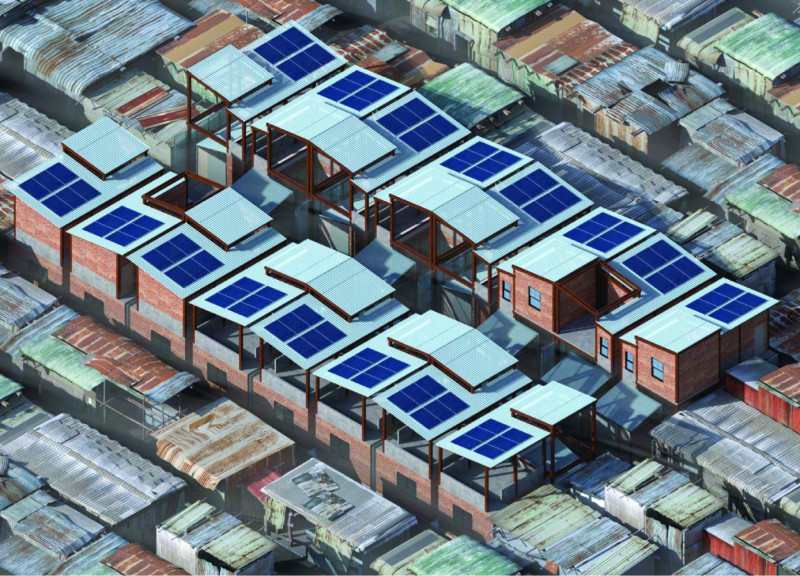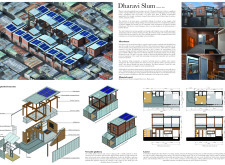5 key facts about this project
### Project Overview
Located in Mumbai, India, the Dharavi Slum initiative addresses the critical housing needs of a densely populated urban area spanning approximately 2.39 square kilometers, home to over one million residents. The intent of the design revolves around creating affordable, self-sustaining housing that aligns with the socio-economic landscape while improving the overall quality of life for the community. The architectural approach emphasizes innovative micro-housing solutions, catering to the diverse requirements of residents amidst existing spatial and infrastructural constraints.
### Microhome Strategy
The project adopts a microhome strategy that maximizes space through vertical design and multifunctional living areas, thereby accommodating varying family sizes and needs. This design approach emphasizes adaptability and resource optimization, allowing for efficient use of limited urban space. Functional layouts are organized into distinct zones, including living, sleeping, sanitation, and workspace areas, with features such as a sunken washing area and under-stair storage to enhance spatial efficiency. The inclusion of a versatile rooftop platform allows for potential future expansion, reflecting a commitment to long-term usability.
### Materiality and Resource Management
Key materials employed in the construction include durable bricks for structural integrity, concrete for foundation stability, and timber for aesthetic enhancement and support. Lightweight corrugated plastic sheets provide weather resistance and allow natural light into interiors, while frosted plastic doors ensure privacy without sacrificing illumination. Additionally, the installation of solar panels and recycled plastic pipes underscores a commitment to sustainability, promoting energy efficiency and effective water management through rainwater harvesting systems. These elements collectively enhance the functional and environmental performance of the housing units, supporting a sustainable urban living model within the community.






















































